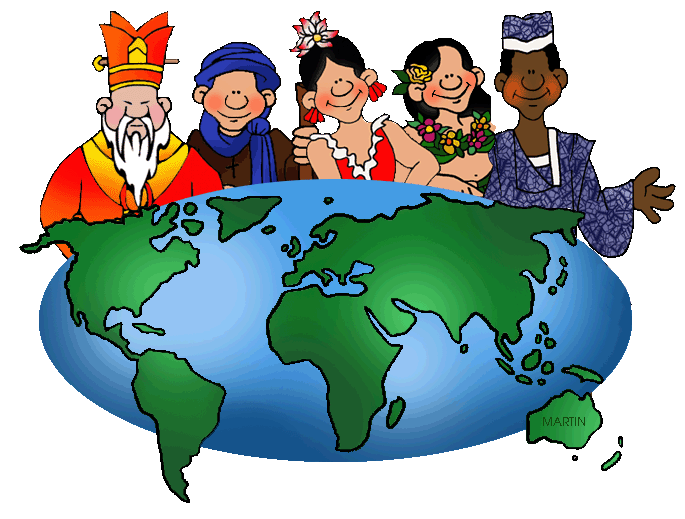Clip art has been a staple in the realm of digital design and communication for decades. Among its many forms, cultural particulars clip art stands out as a fascinating and unique category. This specific type of clip art encapsulates the rich tapestry of human cultures, capturing elements that are emblematic of diverse societies around the globe. From traditional attire to significant landmarks, cultural clip art often serves a dual purpose: it is not only visually engaging but also educational. This dichotomy leads to a deeper exploration of why cultural particulars evoke such interest and curiosity in individuals.
One predominant reason for the allure of cultural clip art lies in its ability to represent stories. Every image carries a narrative, steeped in history and tradition. For instance, an illustration of a Native American headdress is not merely decorative; it symbolizes a vast heritage and a plethora of unique customs and beliefs. Through these artistic representations, individuals from different backgrounds can encounter aspects of cultures they may not otherwise experience. This engagement fosters a sense of global interconnectedness, as it prompts individuals to contemplate the histories behind the imagery.
Furthermore, cultural particulars clip art often serves an educational purpose. In classrooms around the world, educators leverage these visuals in instruction to teach students about various cultures. This pedagogical method not only aids in retention and understanding but also cultivates empathy. By exposing students to the artistic expressions of different cultures, educators lay the groundwork for cultural appreciation and awareness. The colors, patterns, and symbols present in such clip art can spark discussions about identity, heritage, and the impact of cultural exchanges.
Additionally, the visual appeal of cultural clip art cannot be overstated. Artists pour their creativity into every image, infusing it with characteristics that are culturally specific and visually distinct. The intricate designs often reflect the aesthetics unique to particular regions, showcasing the creativity inherent in diverse artistic traditions. For example, African tribal art is known for its vibrant colors and bold patterns, which an artist might skillfully translate into clip art. Such designs not only captivate the eye but also celebrate the aesthetic diversity of world cultures.
A common observation in the realm of clip art is its ability to transcend language barriers. In a world increasingly defined by globalization, cultural particulars clip art serves as a universal language. A well-designed piece can convey complex ideas and sentiments that words may fail to articulate. Consider the power of an image representing a djembe drum. Individuals who have never engaged in music or dance from West Africa may still feel the rhythm and emotion conveyed through the visuals. This non-verbal communication resonates deeply with people, reinforcing the idea that art transcends boundaries and fosters connection.
Moreover, cultural clip art nurtures curiosity about various traditions and practices. The desire to learn more about unfamiliar cultures often stems from the inspiration garnered through these visuals. For instance, seeing a visual representation of traditional Japanese tea ceremonies may ignite interest in understanding the philosophies and rituals that accompany them. This pursuit of knowledge not only enriches individual perspectives but also enhances cultural literacy, ultimately promoting respect and understanding in an increasingly diverse world.
Despite its many benefits, the use of cultural particulars clip art must be approached with caution. Cultural appropriation can inadvertently occur when elements of one culture are appropriated or commodified by another without understanding or respect for their significance. As individuals utilize cultural clip art, it is imperative to remain cognizant of the contexts from which these images emerge. This is particularly important to ensure that cultural representation is meaningful and not merely aesthetic. Engaging with cultures on a deeper level allows individuals to appreciate the nuances and complexities of the artistic expressions they encounter.
In the digital age, the accessibility of cultural clip art has skyrocketed. Many websites offer vast libraries of images, providing an invaluable resource for designers, educators, and the general public. However, this ease of access must be matched with a responsible approach to usage. Artists and designers should consider the origins of the clip art, ensuring that they respect the cultures and communities represented. As these images continue to circulate in digital spaces, fostering discussions about ethical representation remains essential.
Furthermore, cultural particulars clip art can be a stepping stone toward deeper engagement with the cultural practices they depict. Imagine a project where students not only utilize clip art of global celebrations but also conduct research and presentations on these festivities. Such initiatives provide opportunities to create a cohesive understanding of cultural nuances while actively participating in the learning process. This hands-on approach further demystifies cultures and positions individuals as informed global citizens.
In conclusion, cultural particulars clip art occupies an essential space in the nexus of art, education, and cultural appreciation. It offers visual narratives that connect individuals to the rich histories, customs, and artistic traditions of diverse societies. As a valuable tool for fostering understanding and conversation, the importance of cultural clip art is significant in an increasingly globalized world. By honoring the complexity behind these images, individuals can work toward a more inclusive discourse that celebrates the myriad cultural expressions that exist around the globe.
